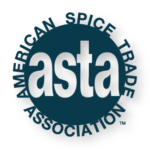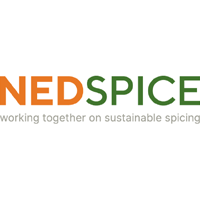 Spices must be processed to control for microbial hazards in order to be safe for consumption. This page includes information on the regulatory requirements and treatment methods available for spices and dried herbs in the US. Common treatment methods include ethylene oxide, propylene oxide, irradiation and steam. The ASTA Clean Safe Spice Guide provides an overview of these treatment methods. As technology advances, the availability of new and emerging treatment methods also become available.
Spices must be processed to control for microbial hazards in order to be safe for consumption. This page includes information on the regulatory requirements and treatment methods available for spices and dried herbs in the US. Common treatment methods include ethylene oxide, propylene oxide, irradiation and steam. The ASTA Clean Safe Spice Guide provides an overview of these treatment methods. As technology advances, the availability of new and emerging treatment methods also become available.
Regardless of the technique used, it is important for companies relying on microbial reduction techniques to ensure each method is permissible and effective. To evaluate the effectiveness of methods, companies are required by the Food Safety Modernization Act (FSMA) Preventive Controls for Human Foods rule to validate each process for all products on which it will be applied in order to achieve the microbial target log. More information on validation methods is available on ASTA’s microbial safety page.
Additional information about the regulatory requirements related to the use of ethylene oxide, propylene oxide, and irradiation, appear in the table below.
Process Control |
Regulatory Resources |
ASTA and Other Resources |
|---|---|---|
| Ethylene Oxide (EtO)
EtO is used by the spice industry to reduce microbial contamination, such as E. coli and Salmonella. |
Ethylene Oxide The EPA regulates the use of EtO in the US and maintains information about the technology on its website.40 CFR §180.151 Tolerances for EtO and ethylene chlorohydrin (ECH) are set by the EPA. Tolerances for EtO are 7ppm for the spice and herb group except basil. Tolerances are established for sesame, peppermint, and spearmint at 7ppm. Products treated with EtO outside the US must also meet the import tolerance of 7 ppm. Tolerances for ECH, an EtO reaction product when EtO is used as a postharvest fumigant in or on food commodities, is set at 940ppm for the spice and herb group except basil, sesame, peppermint, and spearmint. |
2023 Webinar on EtO Features an update from Industry and from EPA.
ASTA Comments on the EtO ANPRM ASTA Analytical Methods ASTA Protocol |
| Irradiation Irradiation is used in the spice industry to control microbial contamination such as E.coli and Salmonella. |
Limitation on Irradiation Dosage The regulations under 21 CFR 179.26(b) provide the limitations on dosages and usage of not to exceed 30 kGy (3 Mrad). This dosage and use limit is:For microbial disinfection of the following dry or dehydrated aromatic vegetable substances when used as ingredients in small amounts solely for flavoring or aroma: culinary herbs, seeds, spices, vegetable seasonings that are used to impart flavor but that are not either represented as, or appear to be, a vegetable that is eaten for its own sake, and blends of these aromatic vegetable substances. Turmeric and paprika may also be irradiated when they are to be used as color additives. The blends may contain sodium chloride and minor amounts of dry food ingredients ordinarily used in such blends.Irradiation- Retail Packaging Per 21 CFR §179.26(c)(1) retail packages of foods that have been irradiated must bear the FDA’s irradiation logo together with the statements, “treated with radiation” or “treated by irradiation.” The FDA’s labeling regulations apply only to foods that have been irradiated, and not to foods that contain irradiated ingredients but that have not themselves been irradiated.Irradiation and Bulk Food Labeling Under 21 CFR §179.26(c)(2) foods not in retail package form but sold at retail (e.g. bulk foods) that have been irradiated must have the FDA irradiation logo and the phrase “treated by irradiation” displayed to the prospective purchaser either on the label of the bulk package, or on a counter sign or other appropriate device. |
Clarification on Secondary Irradiation of Spices In 1998 regulatory correspondence specifically addressing spices and seasonings, FDA stated, “FDA would not object to a second irradiation of substances covered under Sec. 179.26(b) item 5, when such substances are ingredients of a food to be irradiated under Sec. 179.26, as long as any of the substances covered under Sec. 179.26(b) item 5 do not receive more than their permitted irradiated dose, i.e. 30 kGy (3 Mrad).”For use of irradiation on spice or seasoning blends, a company must determine if FDA regulations allow for all ingredients in a blend to be irradiated. All ingredients, whether irradiated individually and subsequently blended, or blended and subsequently irradiated, must be on FDA’s list of permissible ingredients that may be irradiated.ASTA Protocol This document provides basic information on the use of ionizing radiation as a treatment process for the elimination of pathogenic microorganisms on spices and culinary herbs as defined in 21 CFR §179.26.Codex Code of Practice for Radiation Processing of Food The Codex Alimentarius Commission addresses the re-irradiation of foods in its code of practice. |
| Propylene Oxide (PPO)
PPO is used in the spice industry to reduce microbial contamination such as E. coli and Salmonella. |
40 CFR §180.491 Tolerances for PPO are set at 300 ppm for garlic, dried; onion, dried; and herbs and spices group, dried. |
|
| Steam
Steam is used in the spice industry to reduce microbial contaminations such as E. coli and Salmonella |
ASTA Protocol This document is a reference for companies using steam as a microbiocidal process on spices and dried herbs and provides guidelines for processing spices for pathogenic microorganisms.ASTA Microbial Safety All steam treatments must have validated process controls for their intended use. |





